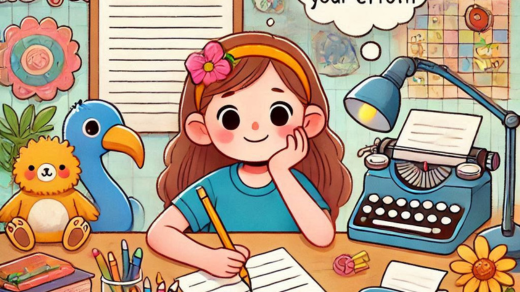The Power of Words: Nurturing Student Growth Through Creative Writing Worksheets
Key Takeaways
- Creative writing fosters imagination and enhances literacy skills in students.
- Structured worksheets can guide students toward emotional expression and improved cognitive abilities.
- Writing prompts can help cultivate a lifelong interest in storytelling and communication.
- Empirical studies show that creative writing positively influences student outcomes across various subjects.
Introduction to Creative Writing in Education
Creative writing is an invaluable component of the educational landscape, allowing students to toss conventional boundaries aside and explore their imagination. In a world where structured academic paths often take precedence, techniques such as writing prompt worksheets provide a crucial platform for encouraging student growth. Students express their creativity and reinforce their understanding of language and communication by weaving their thoughts into narratives. It’s important to note that creative writing isn’t just about crafting stories; it’s about the journey of self-expression and personal growth within education.
The positive shift in student engagement becomes evident when they are encouraged to pen down their ideas. This practice goes beyond mere literacy skill improvements—it ushers in an enhanced ability for problem-solving and emotion identification, invaluable skills in everyday life. Teachers and educators observe a notable increase in confidence and insight among students as they articulate their ideas fearlessly.
Why Worksheets Enhance Creative Writing
Structured worksheets serve as both a guide and a canvas, helping students articulate their creativity while ensuring their thoughts remain coherent and compelling. These guides empower students to navigate the creative process confidently and clearly. Edutopia’s research on creativity in education supports the notion that structured creativity within academic settings nurtures deeper learning and sustained engagement. Worksheets offer a structured yet flexible framework that allows students to experiment with different styles and genres, encouraging a holistic approach to language mastery.
The apparent structure of worksheets can seem restrictive at first glance. However, they are designed to challenge students to think critically and to refine their ideas while presenting students with a productive outlet to explore various facets of writing, including narrative structure, character development, and thematic expression. The result is a cohesive educational experience that cherishes individuality while promoting intellectual growth.
Developing Communication Skills
Communication is foundational in every sphere of life, transcending beyond academic success into personal and professional realms. Through creative writing, students engage in exercises that hone their ability to communicate ideas effectively and persuasively. This skill is paramount as it prepares students for the myriad communication challenges. Whether through written word or verbal interaction, refined communication skills make a profound impact.
The Role of Emotion in Writing
Creative writing serves as a dynamic conduit for emotional exploration. It provides students with a safe space to explore and understand their feelings, a component often overlooked in traditional education. Worksheets that encourage emotional expression foster emotional intelligence, an essential component of personal development. The Guardian highlights the transformative impact of emotional expression in educational settings, underscoring the importance of allowing students to connect with their emotions deeply and authentically.
Emotional intelligence not only contributes to a student’s personal growth but also enhances their ability to empathize with others—a skill that colleges and employers highly value. Nurtured through creative writing, emotional intelligence equips students with the resilience and insight required to navigate the complexities of life with grace.
Using Prompts to Spark Creativity
Writing prompts are key to igniting a student’s creative spark. They provide enough direction to inspire but leave ample room for personal expression. This blend of structure and freedom encourages students to think independently, developing unique narratives that reflect their perspectives and creativity. Regular use of prompts cultivates a habit of writing, allowing students to build their skills incrementally while discovering the joys of storytelling.
With writing prompts, the composition becomes an engaging exercise, transforming perceived obligations into enjoyable activities that resonate with students on a personal level. As they learn to navigate the world through writing, students develop a stronger voice and become more confident in their creative and cognitive abilities.
Interdisciplinary Benefits of Creative Writing
The benefits of engaging in creative writing are not limited to the language arts. Students who immerse themselves in creative writing activities often exhibit improved performance across a diverse range of disciplines. This holistic enhancement is attributed to their elevated comprehension and ability to express complex ideas clearly and logically.
Indeed, students who regularly participate in creative writing exercises develop analytical skills that apply to and improve subjects like history and science. By encouraging creative thinking and sharp communication skills, creative writing fosters an environment of educational cross-pollination, where the lessons learned in literature class lead to breakthroughs in seemingly unrelated subjects.
Real-Life Implications and Benefits
Beyond the confines of the classroom, creative writing shapes students into creative thinkers and innovative problem solvers—skills that are indispensable across all walks of life. By mastering the art of imagination and communication, students prepare themselves for challenges and opportunities, whether personal, academic, or professional. Creative writing instills a sense of curiosity and appreciation for the intricacies of life, fostering a mindset that continually seeks to learn and grow.
Employers seek individuals who can think outside the box and communicate effectively. Students who embrace creative writing develop a robust foundation for success regardless of their chosen career path. Ultimately, nurturing these skills early on can lead to lifelong benefits, shaping future leaders and innovators equipped to make substantial contributions to society.
Conclusion
Creative writing worksheets are more than instructional tools—they are gateways to endless possibilities. Teachers foster an environment where communication, problem-solving, and emotional intelligence can thrive by encouraging students to explore their creativity. Integrating creative writing into educational frameworks sets a foundation for lifelong success, equipping students with the skills to navigate the future confidently and creatively.

